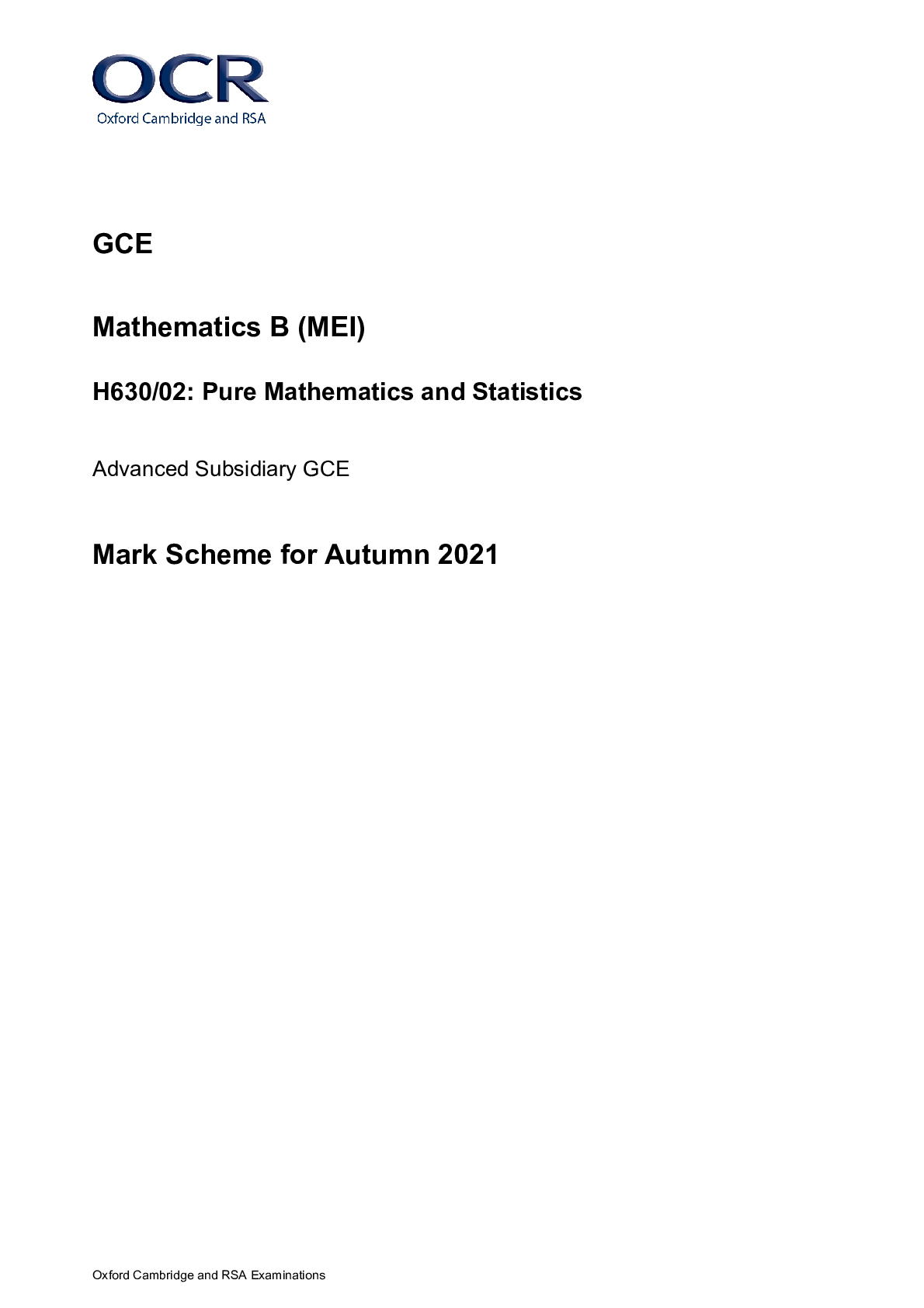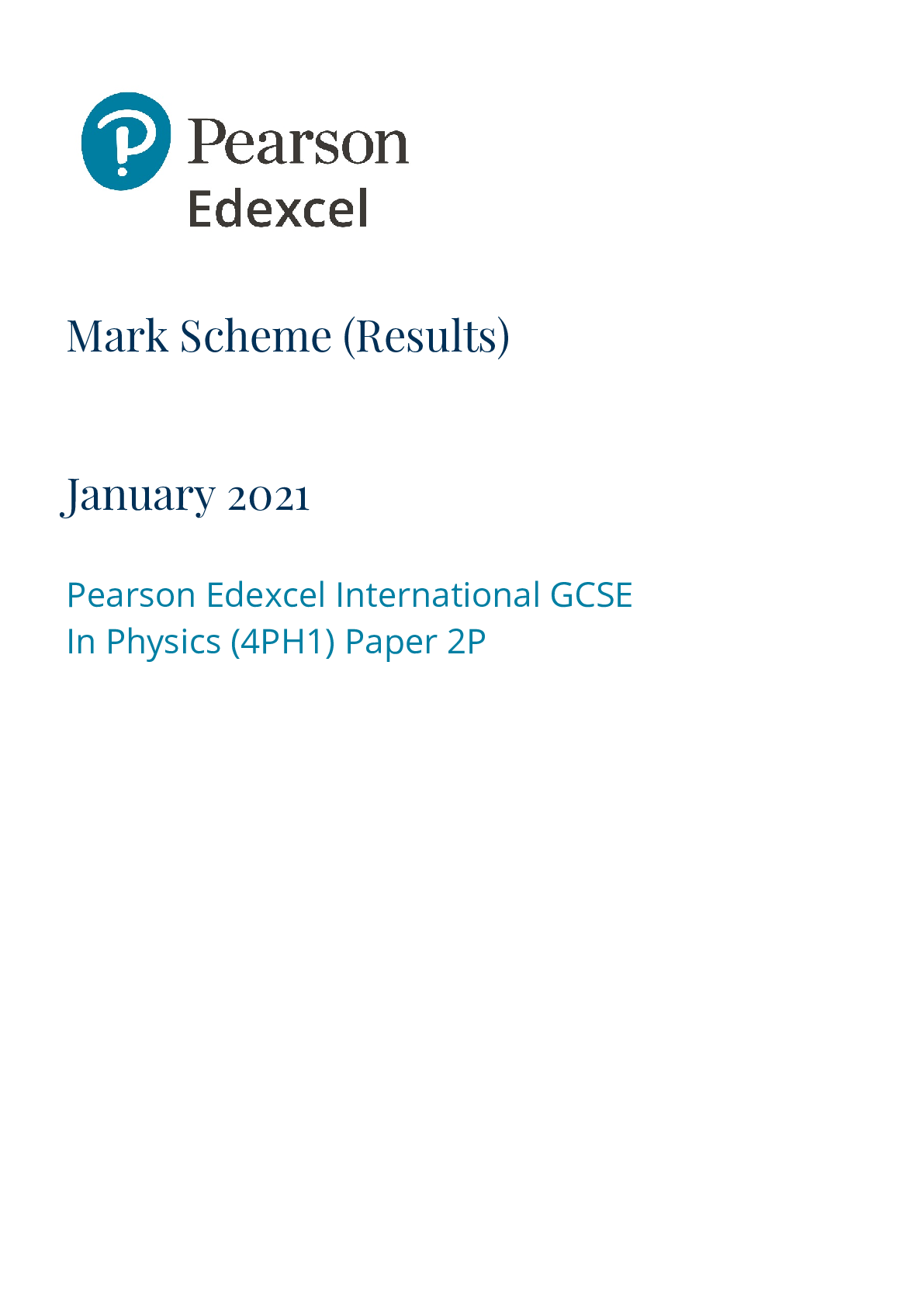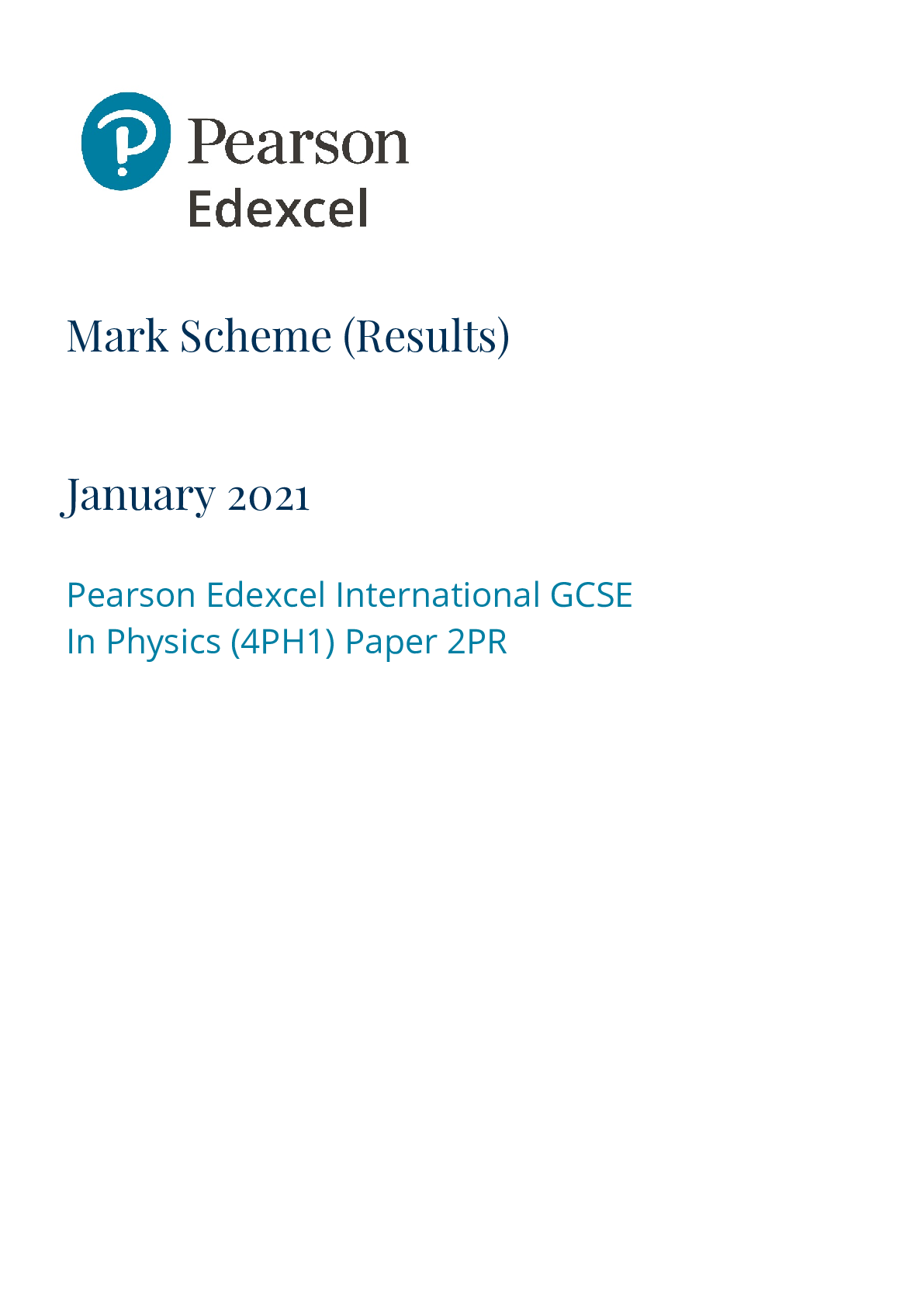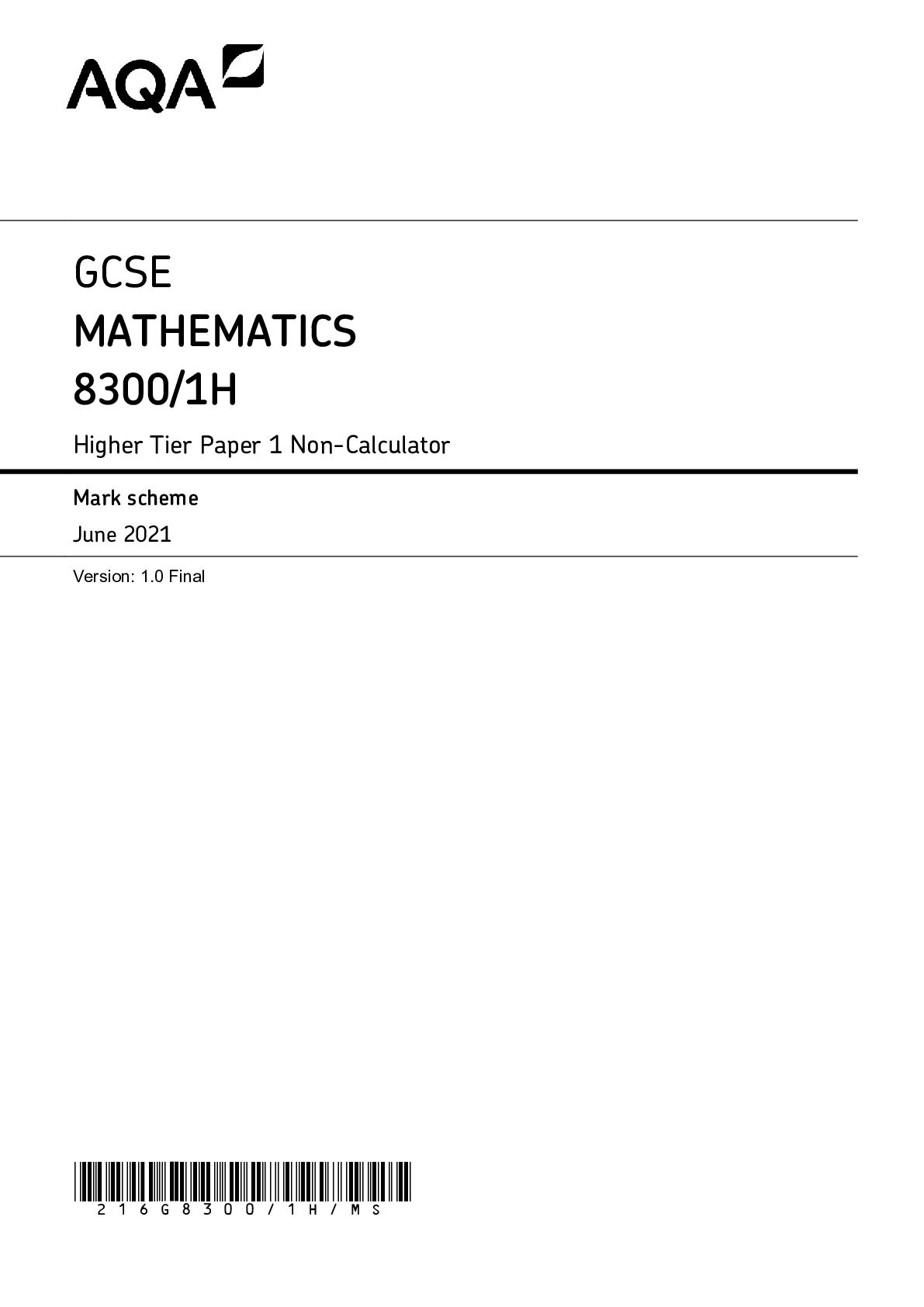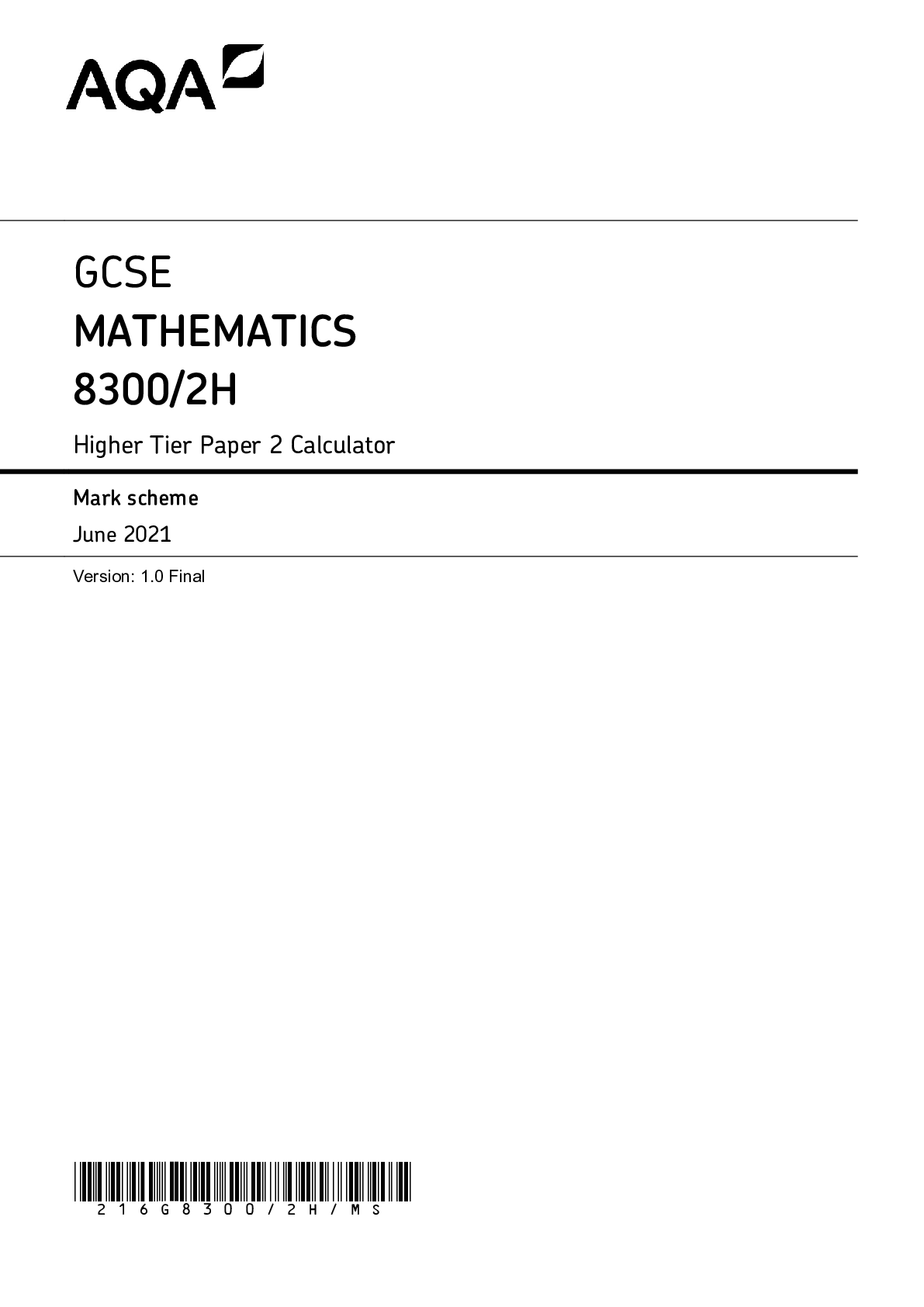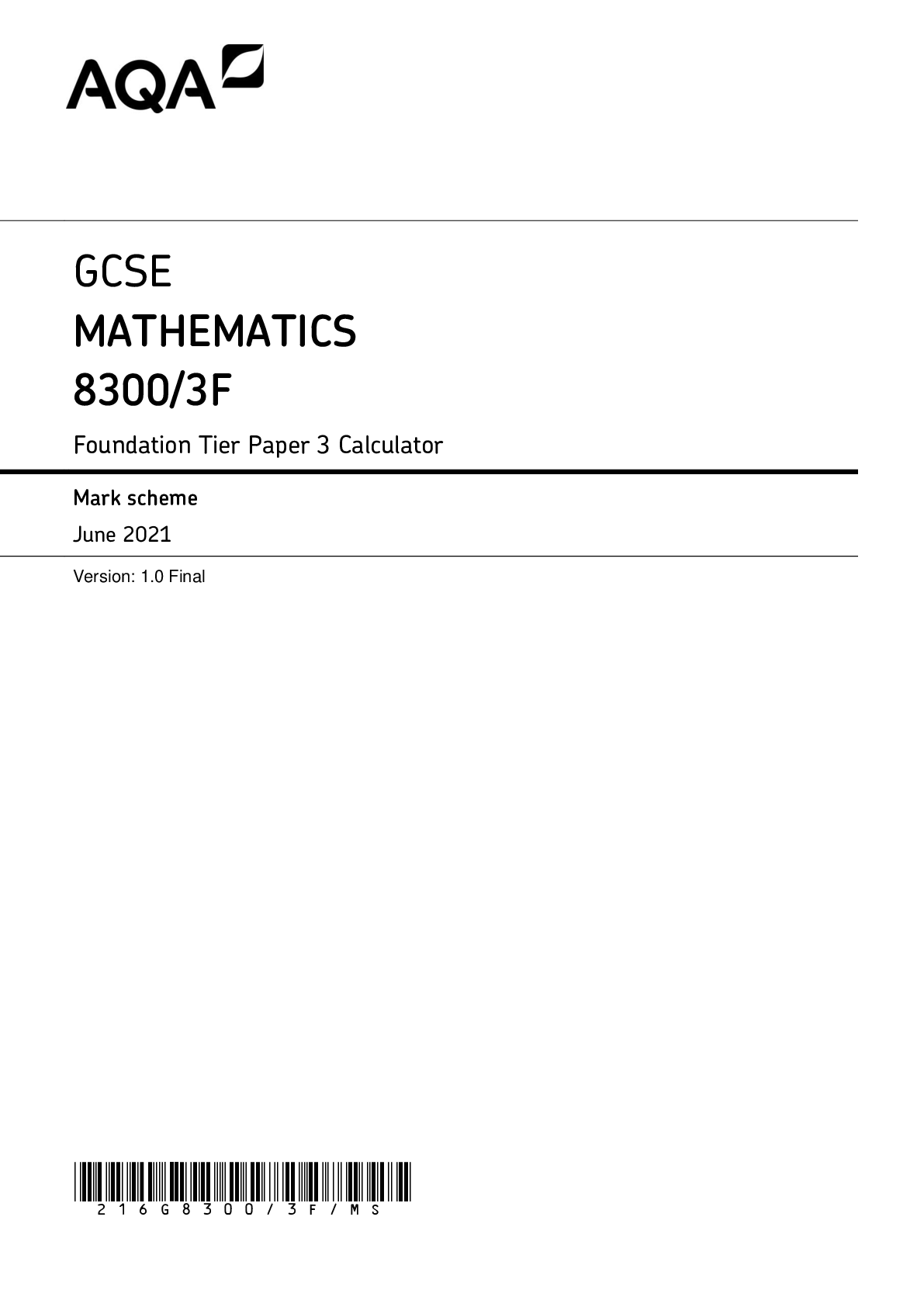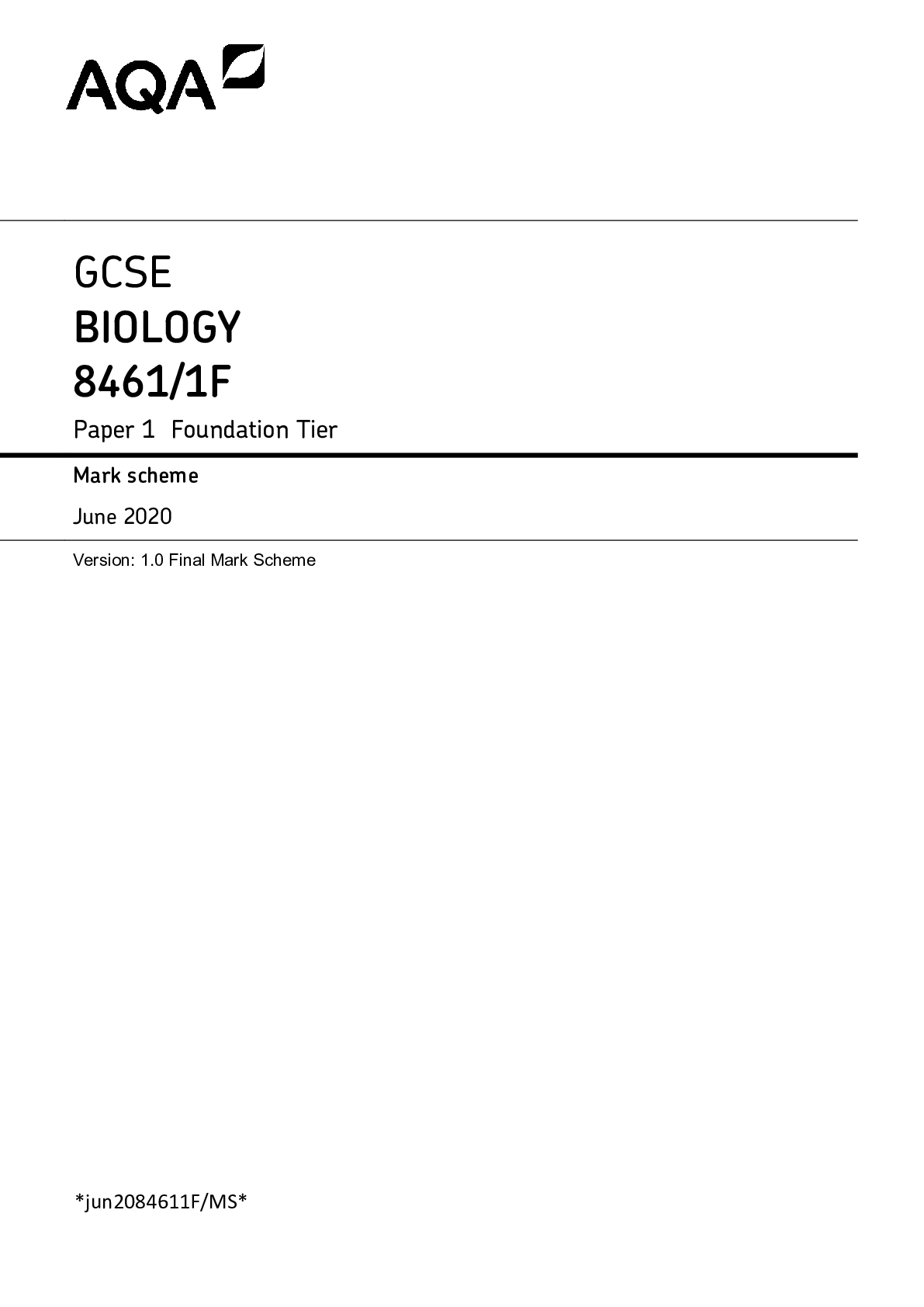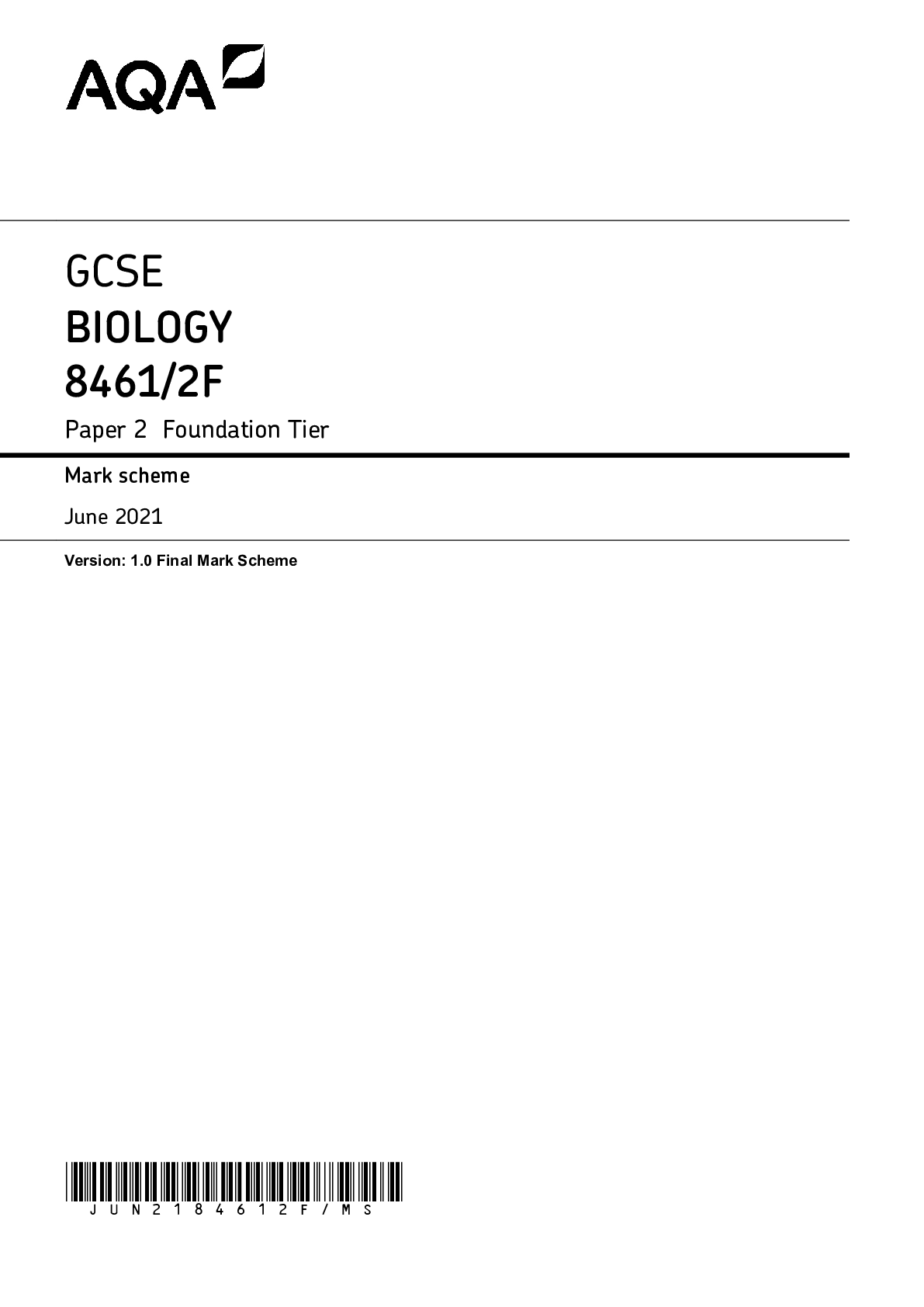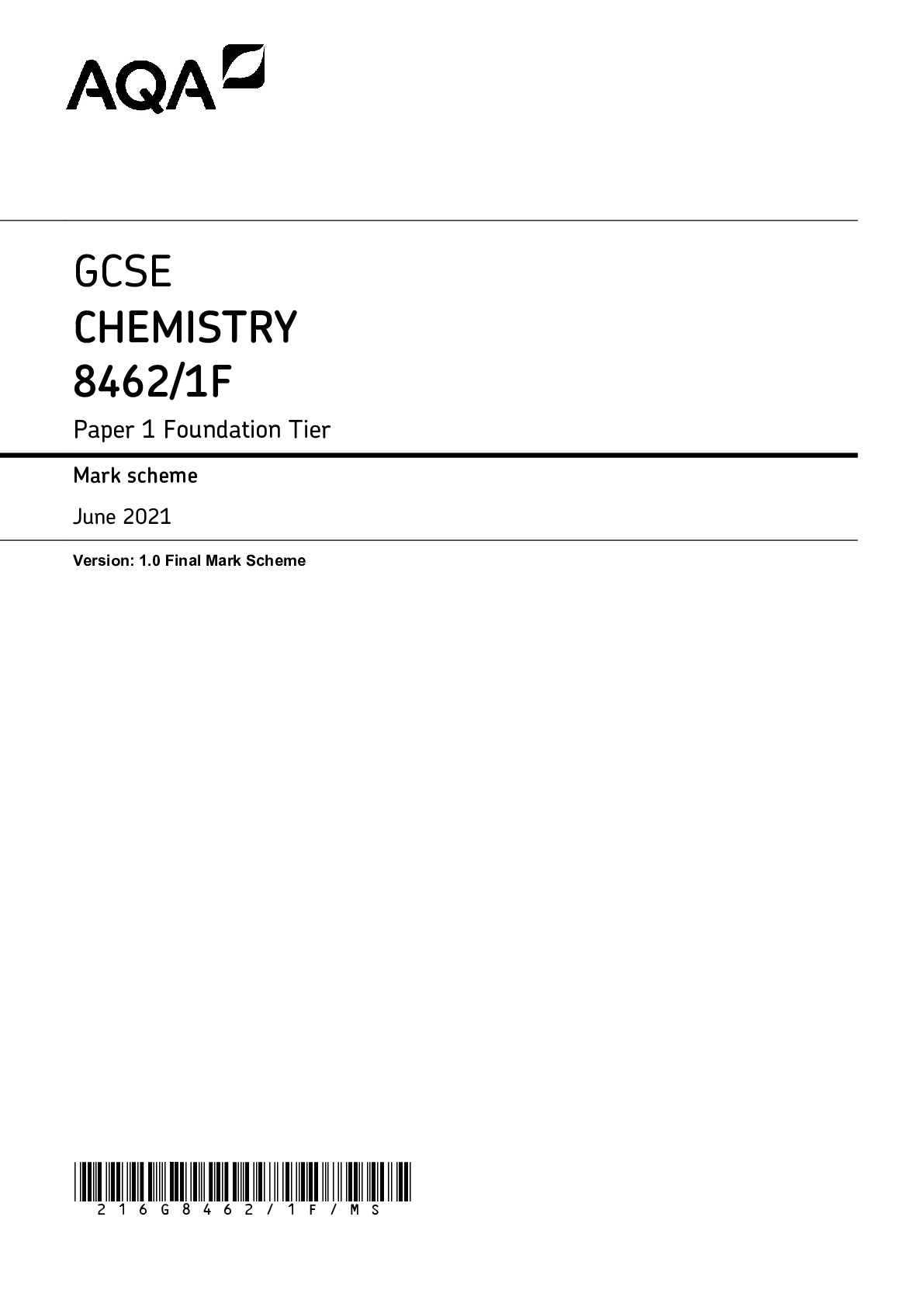Chemistry > GCSE MARK SCHEME > GCSE CHEMISTRY 8462/1H Paper 1 Higher Tier Mark scheme June 2021 Version: 1.0 Final Mark Scheme (All)
GCSE CHEMISTRY 8462/1H Paper 1 Higher Tier Mark scheme June 2021 Version: 1.0 Final Mark Scheme
Document Content and Description Below
Marking points 3.1 Marking of lists This applies to questions requiring a set number of responses, but for which students have provided extra responses. The general principle to be followed in such... a situation is that ‘right + wrong = wrong’. Each error / contradiction negates each correct response. So, if the number of error / contradictions equals or exceeds the number of marks available for the question, no marks can be awarded. However, responses considered to be neutral (indicated as * in example 1) are not penalised. Example 1: What is the pH of an acidic solution? [1 mark] Student Response Marks awarded 1 green, 5 0 2 red*, 5 1 3 red*, 8 0 Example 2: Name two planets in the solar system. [2 marks] Student Response Marks awarded 1 Neptune, Mars, Moon 1 2 Neptune, Sun, Mars, Moon 0 3.2 Use of chemical symbols / formulae If a student writes a chemical symbol / formula instead of a required chemical name, full credit can be given if the symbol / formula is correct and if, in the context of the question, such action is appropriate. 3.3 Marking procedure for calculations Marks should be awarded for each stage of the calculation completed correctly, as students are instructed to show their working. Full marks can, however, be given for a correct numerical answer, without any working shown. 3.4 Interpretation of ‘it’ Answers using the word ‘it’ should be given credit only if it is clear that the ‘it’ refers to the correct subject.MARK SCHEME – GCSE CHEMISTRY – 8462/1H – JUNE 2021 5 3.5 Errors carried forward Any error in the answers to a structured question should be penalised once only. Papers should be constructed in such a way that the number of times errors can be carried forward is kept to a minimum. Allowances for errors carried forward are most likely to be restricted to calculation questions and should be shown by the abbreviation ecf in the marking scheme. 3.6 Phonetic spelling The phonetic spelling of correct scientific terminology should be credited unless there is a possible confusion with another technical term. 3.7 Brackets (…..) are used to indicate information which is not essential for the mark to be awarded but is included to help the examiner identify the sense of the answer required. 3.8 Allow In the mark scheme additional information, ‘allow’ is used to indicate creditworthy alternative answers. 3.9 Ignore Ignore is used when the information given is irrelevant to the question or not enough to gain the marking point. Any further correct amplification could gain the marking point. 3.10 Do not accept Do not accept means that this is a wrong answer which, even if the correct answer is given as well, will still mean that the mark is not awarded. 4. Level of response marking instructions Extended response questions are marked on level of response mark schemes. • Level of response mark schemes are broken down into levels, each of which has a descriptor. • The descriptor for the level shows the average performance for the level. • There are two marks in each level. Before you apply the mark scheme to a student’s answer, read through the answer and annotate it (as instructed) to show the qualities that are being looked for. You can then apply the mark scheme.MARK SCHEME – GCSE CHEMISTRY – 8462/1H – JUNE 2021 6 Step 1: Determine a level Start at the lowest level of the mark scheme and use it as a ladder to see whether the answer meets the descriptor for that level. The descriptor for the level indicates the different qualities that might be seen in the student’s answer for that level. If it meets the lowest level then go to the next one and decide if it meets this level, and so on, until you have a match between the level descriptor and the answer. When assigning a level you should look at the overall quality of the answer. Do not look to penalise small and specific parts of the answer where the student has not performed quite as well as the rest. If the answer covers different aspects of different levels of the mark scheme you should use a best fit approach for defining the level. Use the variability of the response to help decide the mark within the level, ie if the response is predominantly level 2 with a small amount of level 3 material it would be placed in level 2 but be awarded a mark near the top of the level because of the level 3 content. Step 2: Determine a mark Once you have assigned a level you need to decide on the mark. The descriptors on how to allocate marks can help with this. The exemplar materials used during standardisation will help. There will be an answer in the standardising materials which will correspond with each level of the mark scheme. This answer will have been awarded a mark by the Lead Examiner. You can compare the student’s answer with the example to determine if it is the same standard, better or worse than the example. You can then use this to allocate a mark for the answer based on the Lead Examiner’s mark on the example. You may well need to read back through the answer as you apply the mark scheme to clarify points and assure yourself that the level and the mark are appropriate. Indicative content in the mark scheme is provided as a guide for examiners. It is not intended to be exhaustive and you must credit other valid points. Students do not have to cover all of the points mentioned in the indicative content to reach the highest level of the mark scheme. You should ignore any irrelevant points made. However, full marks can be awarded only if there are no incorrect statements that contradict a correct response. An answer which contains nothing of relevance to the question must be awarded no marks.MARK SCHEME – GCSE CHEMISTRY – 8462/1H – JUNE 2021 7 Question 1 Question Answers Extra information Mark AO / Spec. Ref. 01.1 spherical allow ball-shaped ignore round / circular 1 AO1 4.2.3.3 Question Answers Extra information Mark AO / Spec. Ref. 01.2 any one from: • drug delivery (round the body) • hydrogen storage • anti-oxidants • reduction of bacterial growth • catalysts • (cylindrical fullerenes for) strengthening materials • (spherical fullerenes for) lubricants 1 AO1 4.2.3.3 Question Answers Extra information Mark AO / Spec. Ref. 01.3 1 AO2 4.2.1.4 Question Answers Extra information Mark AO / Spec. Ref. 01.4 C3H6O allow CH3COCH3 allow elements in any order 1 AO2 4.2.1.4MARK SCHEME – GCSE CHEMISTRY – 8462/1H – JUNE 2021 8 Question 1 continued Question Answers Extra information Mark AO / Spec. Ref. 01.5 the intermolecular forces are weak 1 AO1 4.2.2.1 4.2.2.4 Question Answers Mark AO/ Spec. Ref 01.6 Level 3: Relevant points (reasons/causes) are identified, given in detail and logically linked to form a clear account. 5–6 AO1 4.2.2.6 4.2.3.2 Level 2: Relevant points (reasons/causes) are identified, and there are attempts at logical linking. The resulting account is not fully clear. 3–4 Level 1: Points are identified and stated simply, but their relevance is not clear and there is no attempt at logical linking. 1–2 No relevant content 0 Indicative content • bonds are covalent • giant / macromolecular structure • three (covalent) bonds per carbon atom or only three electrons per carbon atom used in (cova [Show More]
Last updated: 2 years ago
Preview 1 out of 26 pages
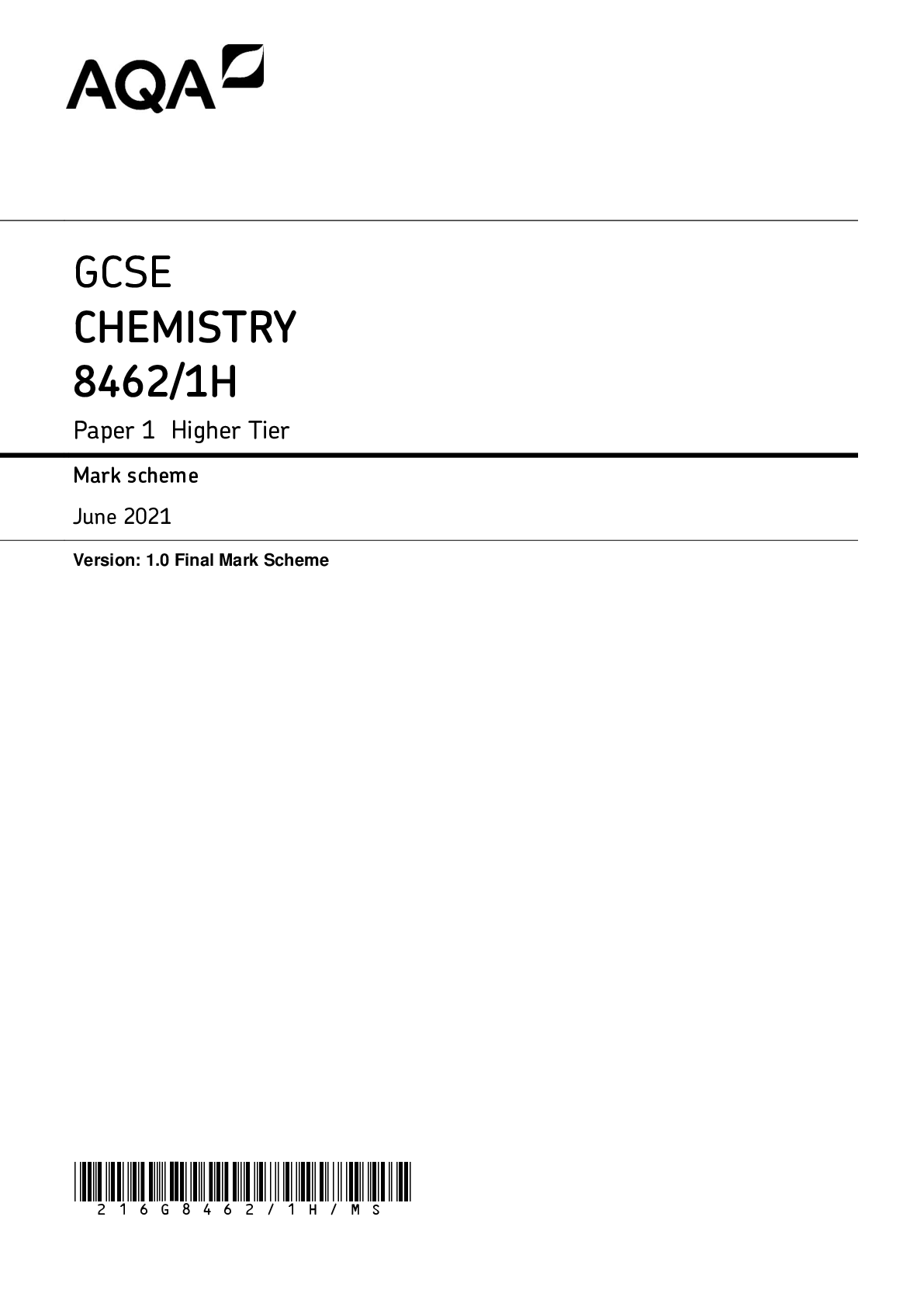
Buy this document to get the full access instantly
Instant Download Access after purchase
Buy NowInstant download
We Accept:

Reviews( 0 )
$8.00
Can't find what you want? Try our AI powered Search
Document information
Connected school, study & course
About the document
Uploaded On
Jun 15, 2022
Number of pages
26
Written in
Additional information
This document has been written for:
Uploaded
Jun 15, 2022
Downloads
0
Views
137

